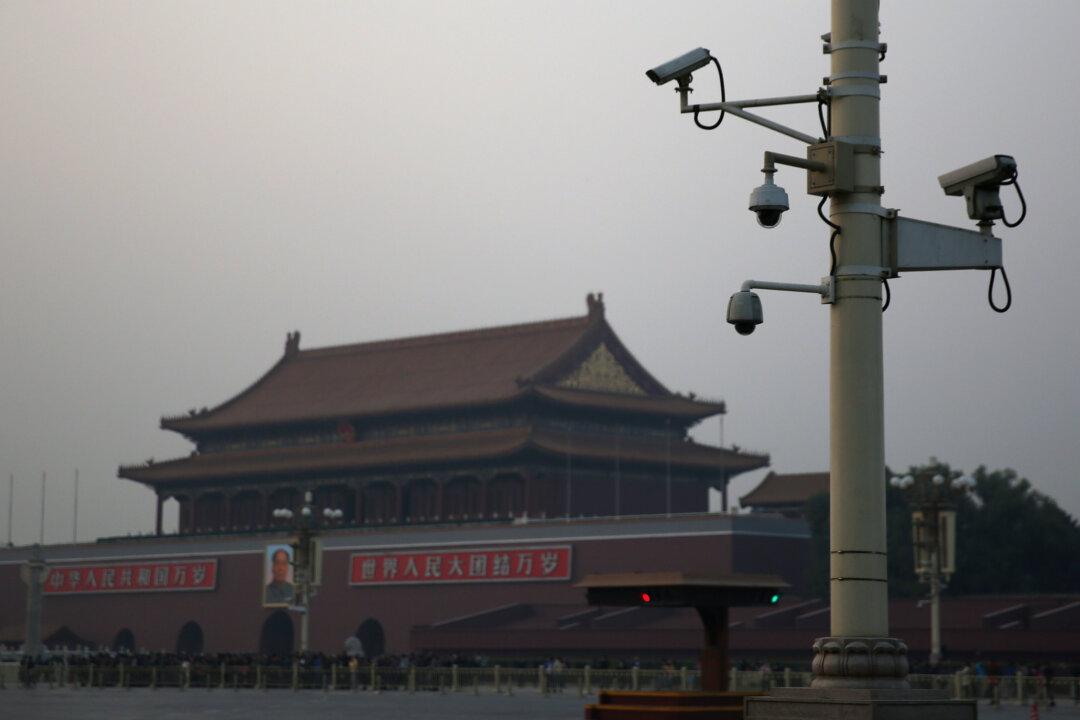The Chinese regime is spying on every Chinese citizen, including the Party’s top leaders, according to a report from the Vancouver-based Chinese news website Creaders.net, which exposes the nationwide spying program.
The covert program, run by the Chinese regime’s Ministry of Public Security, is called “Big Intelligence.”
Sound of Hope Radio (SOH Radio) cites Wang Lijun, China’s former Chief of Chongqing Public Security Bureau, as saying the program takes 12 minutes to review all 1.3 billion Chinese people, 4 minutes to review every person on China’s wanted list, and 3.5 minutes to review the driver’s license of every person in China.
The program has been running for close to 10 years and the Chinese regime has kept it tightly under wraps, according to SOH Radio. It states, “Experts believe that this project has surveillance throughout the entire country.”
The program was started by the Chinese regime’s former security chief Zhou Yongkang, who was recently placed under investigation. It began as a program within China’s police force which would integrate all its public resources and data.
The program was first publicly announced shortly after Wang Lijun fled to the United States Consulate in February 2012. The information that Wang provided first to U.S. Consular officials and then to the Chinese Communist Party in Beijing about Chongqing Party Secretary Bo Xilai triggered the anti-corruption campaign now sweeping through China, according to individuals familiar with the matter.
At the time, Caijing Magazine reported that the Chinese regime has a US$3.26 billion monitoring system, which it bragged was the most advanced in the world, according to SOH Radio. Just in Chongqing, the program allegedly uses more than 50,000 surveillance cameras that cover every corner of the city.
The magazine claimed the dragnet surveillance system was established in Chongqing to make the city safer.
After Bo Xilai was arrested in the anti-corruption campaign, it was reported that Wang Lijun had used the spying system to monitor top leaders of the Chinese Communist Party, according to SOH Radio.

Chongqing is just one small part of the Chinese regime’s “Big Intelligence” spying program.
In southern China’s Guangdong Province in 2009 there were more than 800,000 surveillance cameras in Shenzhen City—one camera for every 15 people, according to SOH Radio. More than 250,000 cameras were installed in Guangzhou, the capital of Guangdong. The cities of Foshan, Dongguan, and Zhongshan each had 100,000 cameras installed.
In Kunming City in 2009, the capital of southwestern China’s Yunnan Province, more than 310,000 cameras were installed.
In 2010, close to 60,000 surveillance cameras were installed in Changchun City in northeastern China’s Jilin Province. And in 2011, 60,000 cameras were installed in Changsha City, the capital of south-central China’s Hunan Province.
Massive systems of surveillance cameras can now be found in more than 676 cities across China, according to SOH Radio. It notes that prior to the 2008 Beijing Olympics, surveillance cameras were even being installed in buses and rental cars.
Going by the available data, it appears the surveillance program uses facial recognition technology on video feeds, and can locate targeted individuals based on personal records.
The network of security cameras comes packaged with the Chinese Communist Party’s systems for monitoring all Internet traffic, microblogs, social networking sites, and even website comments.
It also comes alongside the Chinese military’s large-scale operations to monitor domestic phone calls, which was exposed by Canada-based Kanwa Information Center and was broadly reported in Taiwan and Hong Kong on Nov. 17.
Translation by Frank Fang.





